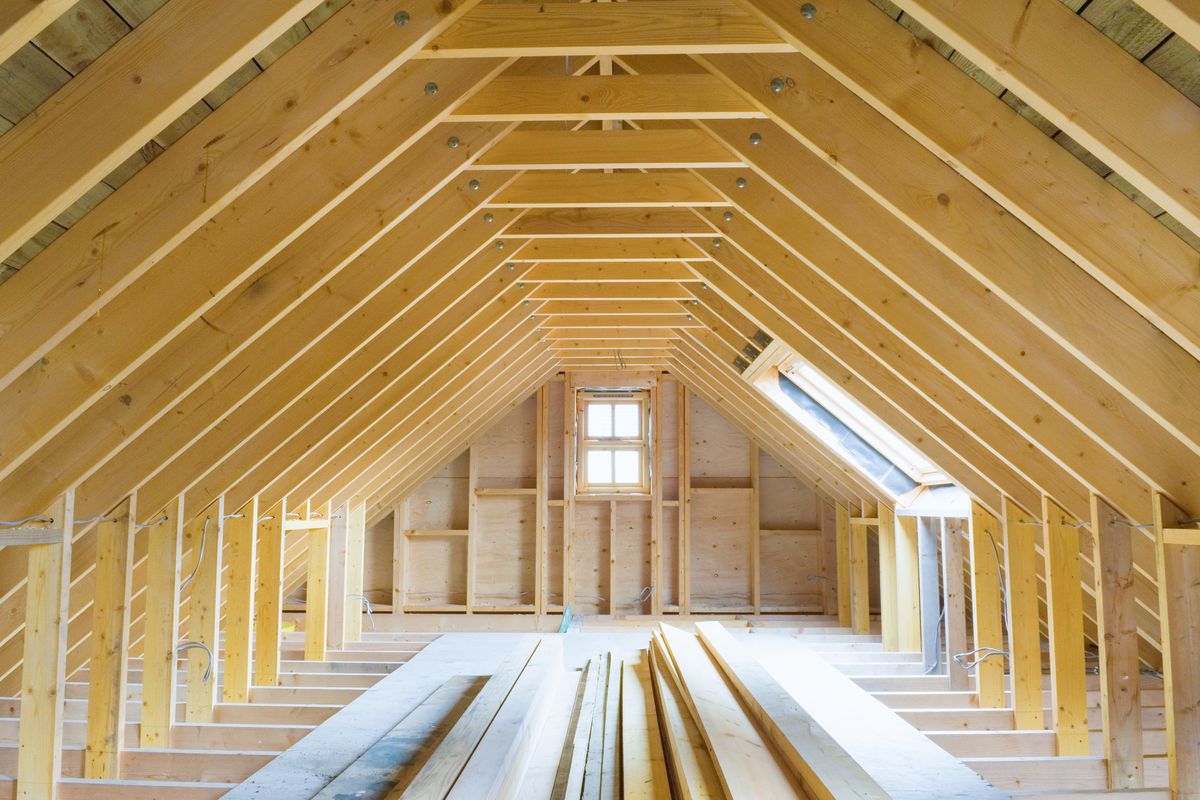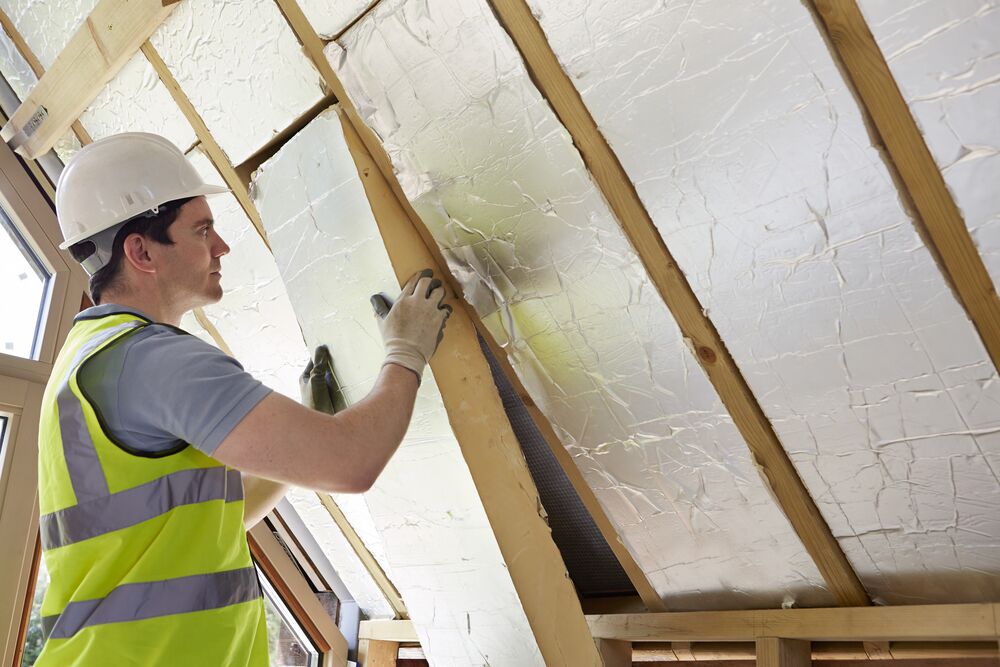How Attic Insulation DFW Can Change Your Home's Climate Control
How Attic Insulation DFW Can Change Your Home's Climate Control
Blog Article
Discover the Different Types of Attic Insulation and Their One-of-a-kind Benefits for Your Home's Power Efficiency

Fiberglass Insulation
Fiberglass insulation is just one of the most frequently used materials for attic room insulation as a result of its outstanding thermal efficiency and cost-effectiveness. Made up of little glass fibers, this material properly traps air, developing a protecting obstacle that helps preserve regular indoor temperature levels. Its high R-value per inch makes it specifically efficient at standing up to warm transfer, which is critical for energy conservation in homes.
Installation of fiberglass insulation is fairly uncomplicated, often offered in batts or loose-fill forms, fitting numerous attic room configurations. Additionally, it is immune and non-combustible to moisture, lowering the risk of mold growth. This resilience adds to its longevity, making fiberglass a practical long-lasting investment for home owners.
Moreover, fiberglass insulation is typically produced from recycled materials, which improves its eco-friendliness. The material can additionally contribute to soundproofing, decreasing noise transfer between rooms. While it is necessary to use safety gear during installation to avoid inflammation from the fibers, the general benefits of fiberglass insulation, including power savings and ecological factors to consider, make it a prominent option for improving attic performance and advertising a comfortable living environment.
Spray Foam Insulation
Spray foam insulation is a highly reliable option for attic insulation, known for its premium air securing and thermal efficiency. This innovative insulation material is composed of a mixture of isocyanate and polyol resin, which, when combined, expands swiftly to load voids and cavities in the attic room area. Its ability to follow numerous surface areas makes sure a continual obstacle against air leakages, substantially lowering heat loss throughout cooler months and warmth gain throughout warmer periods.
Among the key advantages of spray foam insulation is its high R-value per inch, which suggests it supplies excellent thermal resistance in a reasonably slim application. This is especially useful in attics where area is often restricted. Additionally, spray foam can assist reduce dampness build-up, lowering the threat of mold and mildew and mildew development, which can be detrimental to both the structure and indoor air high quality.
While the initial expense of spray foam insulation may be higher than standard options, its long-lasting power financial savings, coupled with boosted convenience and boosted home value, make it a rewarding investment for home owners looking for improved power efficiency. Attic Insulation DFW. In general, spray foam insulation attracts attention as an efficient remedy for optimizing attic insulation
Cellulose Insulation

Cellulose insulation is a popular selection for attic room insulation, mainly composed of recycled paper items treated with fire resistants. This eco-friendly option is understood for its exceptional thermal performance, effectively minimizing heat transfer in both summertime and cold weather. The dense make-up of cellulose allows it to load gaps and spaces in attic room rooms, offering a smooth obstacle against air leakages.
Among the considerable advantages of cellulose insulation is its capability to resist mold and parasites, owing to the fire resistant therapies used throughout production. Additionally, it flaunts a high R-value per inch, which translates into superior energy performance. House owners can anticipate reduced Read More Here heating & cooling prices as an outcome of improved insulation.
Installment is usually completed with blowing loose cellulose into the preferred location, enabling a reliable and fast process. This approach also lessens disturbance to the existing framework. Cellulose insulation has a reasonably low environmental influence, as its production process uses recycled products, contributing to sustainable building techniques.
Rock Wool Insulation
Among the numerous alternatives for attic room insulation, rock woollen, also referred to as mineral wool, attracts attention due to its excellent thermal and acoustic efficiency. Made from all-natural or recycled products, rock woollen is developed by thawing rock and rotating it into fibers, leading to a product that supplies superb insulation buildings.
Among the significant advantages of rock wool insulation is its high R-value, which shows its performance in standing up to warmth circulation. This characteristic not only improves power performance however additionally adds to preserving a comfortable indoor temperature level year-round. In addition, rock woollen is naturally fire-resistant, making it a more secure alternative for homes as it can stand up to heats without melting or releasing toxic fumes.
Furthermore, rock wool insulation stands out in soundproofing capabilities, effectively lowering noise transmission in between areas and from outdoors resources. Overall, rock woollen insulation provides an extensive remedy for enhancing energy performance, safety, and convenience in property setups.
Radiant Barrier Insulation
Radiant barrier insulation works as an efficient solution for lessening warmth transfer in attic rooms, especially in warmer environments. This kind of insulation works by showing convected heat far from living areas, therefore minimizing the quantity of warmth that enters a home during heat - Attic Insulation DFW. Normally composed of a very reflective product, such as aluminum foil, radiant obstacles are mounted in attics, encountering the roofing, where they can intercept inbound warm from the sunlight
The primary benefit of radiant obstacle insulation is its capability to lower cooling costs. By showing warm instead than absorbing it, radiant obstacles can help keep a more steady interior temperature, decreasing the workload on air conditioning systems. This performance equates into reduced power costs and increased comfort for property owners.
In enhancement to power financial savings, glowing obstacles can also add to boosted interior air quality. By minimizing warm accumulation, they aid reduce humidity degrees, which can stop mold growth and enhance total air blood circulation. When installed appropriately, radiant barrier insulation can be an important enhancement to any home kind of energy-efficient home, making it a worthwhile factor to consider for house owners aiming to enhance their attic insulation strategy.
Final Thought
Finally, recognizing the different types of attic insulation-- fiberglass, spray foam, cellulose, rock wool, and radiant obstacles-- enables house owners to make informed choices pertaining to power efficiency. Each insulation kind provides special benefits, such as remarkable thermal resistance, dampness administration, and audio depletion. By selecting the ideal insulation product, substantial decreases in energy prices can be attained, along with enhancements in interior comfort. Ultimately, the ideal option contributes to an extra sustainable living atmosphere and advertises overall power preservation.

In verdict, understanding the different types of attic insulation-- fiberglass, spray foam, cellulose, rock wool, and glowing barriers-- makes it possible for home owners to make educated choices concerning power efficiency.
Report this page